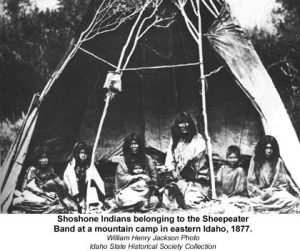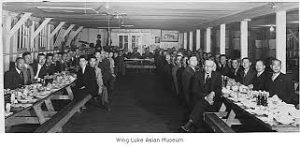Idaho Commission on Human Rights was created in response to Anti-Mexican sentiment in Canyon County and elsewhere in the state.
Idaho Fair Employment Practices Act
In response to Anti-Mexican treatment, Idaho passed its first anti-discrimination law in 1961, the Idaho Fair Employment Practices Act.
Read More
Idaho Fair Employment Practices Act
February 19, 1942, Japanese Internment
“It didn’t matter if you were a U.S. citizen, it didn’t matter if you were born as an American, all that mattered was that your skin color was dark… and therefore you were seen as a threat because of Pearl Harbor.”
– Emily Tani-Winegarden, Grand Daughter of Tad and Yoshi Tani who were both Incarcerated at the Minidoka Internment Camp in Southern Idaho
In one of the United States’ greatest Fair Housing violations, President Franklin Delano Roosevelt issued Executive Order 9066 on February 19, 1942 which sentenced nearly 120,000 innocent Japanese Americans to incarceration in internment camps for the following 2-4 years. Over two-thirds of the people of Japanese ethnicity who were incarcerated — almost 70,000 — were American citizens. Many of the rest had lived in the country between 20 and 40 years.
No Japanese-American citizen or Japanese national residing in the United States was ever found guilty of sabotage or espionage.
In December 1982, the Commission on Wartime Relocation and Internment of Civilians concluded that the incarceration of Japanese Americans had not been justified by military necessity. The report determined that the decision to incarcerate was based on “race prejudice, war hysteria, and a failure of political leadership.”
Read More
February 19, 1942, Japanese Internment
1896, Women’s Right to Vote
Idaho became the fourth state in the nation to give women the right to vote. The territorial legislature had come close to giving women the right to vote as early as 1869. In 1867, the territorial legislature passed a statute making Idaho a community property state, property owned jointly by a married couple. It was not until the turn of the century that women in more than a handful of states had equal rights to family assets.
Read More
1896, Women’s Right to Vote
The 1889 Agreement
This agreement resulted in the transfer of the lands adjoining the Coeur d’ Alene Lake, Coeur d’ Alene River and St. Joe River, areas at the time still inhabited by the most traditional Schitsu’umsh people.

Read More
The 1889 Agreement
The 1887 Agreement
Reservation, created by Ulysses S. Grant through Presidential Executive Order in 1873.
Read More
The 1887 Agreement
1860s-1880s, Chinese Presence in Early Idaho
“America wouldn’t have been built if it wasn’t for the Chinese, because the railroads opened up the country.”
– Linda Jew, Great Granddaughter of Chin Lin Sou, A Chinese Miner who Immigrated to America in the 1800s
Chinese were among the thousands of miners who came to Idaho for gold, discovered in the fall of 1860 in Pierce. By the 1870 Census, 28.5 percent of Idaho’s population was Chinese.
Chinese people made up between one-quarter and one-third of Idaho’s total population. In 1885 through 1886, an Anti- Chinese attitude exploded and was often led by the Knights of Labor, an early labor union. Laws were enacted to prevent Chinese men from owning property, returning to the United States once they left, or bringing their wives and parents to the country with them. In 1886, a large Anti-Chinese convention was held in Boise and violent expulsion of Chinese people spread through the state.
As it pertained to housing, Idaho history was rife with what would now be considered egregious violations of the Fair Housing Act. In 1883 when Lewiston’s Chinatown caught fire, the fire department refused to extinguish the flames until they were a threat to white-inhabited structures.
National Miners Day was established in 2009 to remember miners who died working in the mines and to honor the hard work and commitment of today’s miners. We would be remiss to omit from Idaho’s history the mistreatment of Chinese miners in particular when observing this day.
Read More
1860s-1880s, Chinese Presence in Early Idaho
January 29, 1863, Bear River Massacre
 200 California Volunteer U.S. Troops attacked 390 members of the Northwestern Band of the Shoshone who were wintering near the confluence of the Bear River and a frozen creek. Approximately 23 soldiers and 250 Shoshone people were killed within about four hours.”
200 California Volunteer U.S. Troops attacked 390 members of the Northwestern Band of the Shoshone who were wintering near the confluence of the Bear River and a frozen creek. Approximately 23 soldiers and 250 Shoshone people were killed within about four hours.”

